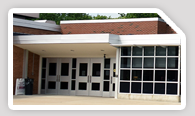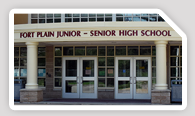Tag: policies
Pediculosis/Head Lice Policy
Head lice are tiny insects that can be found on the scalp and hair. According to the Centers for Disease Control (CDC), an estimated 6 million to 12 million infestations occur each year in the United States among children 3 to 11 years of age. The term for infestation of lice is pediculosis.
While head lice are not harmful and do not spread disease, they can cause discomfort and annoyance. It is essential that we work together as a community to prevent and manage any cases that may arise.
Pediculosis Policy
At its regular meeting on February 14, 2024, the Fort Plain CSD Board of Education voted to approve district policy 7515 related to pediculosis (head lice.)
This policy is designed to support students and families in their efforts to control and eliminate lice, maintain student privacy and decrease absenteeism.
Fort Plain Central School District Policy 7515 – Pediculosis
Pediculosis is infestation with the human head-and-body louse, Pediculus humanus. There are two subspecies, the head louse (P. h. capitis) and the body louse (P. h. humanus).
The American Academy of Pediatrics (AAP) and the National Association of School Nurses (NASN) do not treat head lice as an illness that necessitates an absence from school and have shown that the contagion does not spread as easily as once thought.
The Board of Education does not condone the absence of students from school for unnecessary reasons. The District is invested in keeping infestations to a minimum.
In order to control infestations of pediculosis, the Board of Education has adopted the following protocols:
- Whenever there is a possibility of an infestation, the School Nurse will conduct a head check to assess the situation. If live lice are found, the School Nurse will contact the student’s parent/guardian. The parent/ guardian will be asked to pick up the student and apply a corrective treatment. The student will not be allowed to return to their classroom until a corrective treatment has been given. Corrective treatments will be made available as needed (provided by the School Nurse) and are to be administered at home. The School Nurse will reassess the student via a head check after treatment is applied. The student must be free from live lice in order to return to the classroom and/or be able to participate in school functions.
- Administrators and the School Nurses will work with both students and parents to minimize the number of absences caused by head lice.
*If a student has live lice, they may not attend any after school events on the day of the assessment, unless a treatment has been applied and there has been a consultation with the School Nurse or an administrator clearing them to participate. Ex. Student is sent home at 2pm. Treatment is applied. Parent contacts the administrator to receive permission for the student to attend the concert. Administrator grants permission.
- All School Staff will protect student privacy and maintain the confidentiality of medical information related to infestations of head lice.
Mitigation
- Whenever a student is identified with live lice, a parent notification will be sent to the entire class to raise awareness regarding exposure.
- Ongoing monitoring by School Nurses via random classroom and household head check.
- Treatment kits provided to families as needed.
- Timebound interventions for classrooms where a case of live lice was identified.
- Spacing between personal items
- Classroom screenings
- No head-to-head contacts or sharing of headgear allowed


